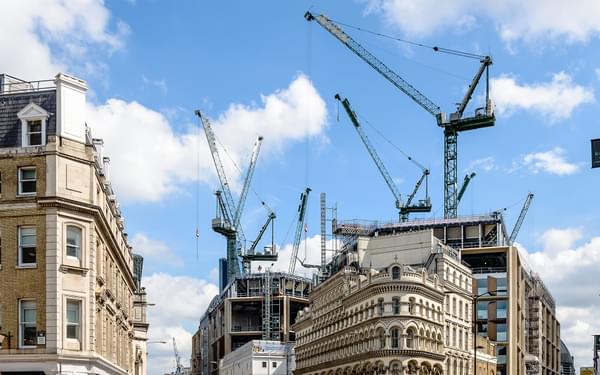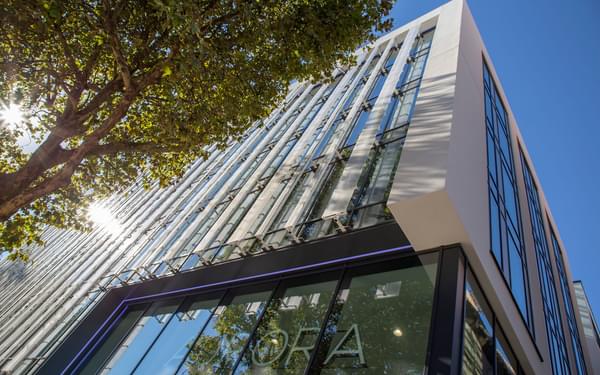Building Safety Act: A beginner's guide
Our ultimate guide to get you up to speed with all things Building Safety Act and Golden Thread.

“ These complex, legislation-based changes will ultimately result in the biggest culture shift in the industry for generations – so let’s get the ball rolling. ”
James McNay
Divisional Director – Fire Safety

Ripping up the rule book and starting again. That’s essentially what the Building Safety Act is doing by firmly placing the safety of occupants front and centre. It transforms every step of the building process, holding those responsible for safety defects to account, via a golden thread of information.
What is the Building Safety Act 2022?
Following the Grenfell Tower fire in June 2017, Dame Judith Hackitt led an inquiry that found the construction industry not fit for purpose in terms of safety. Her recommendations formed the backbone of the Building Safety Act, which gained Royal Assent in April 2022.
Overhauling existing regulations, its core aim is to create industry-wide, lasting change. It goes far beyond fire safety alone, and it is having an impact across the entire construction process, affecting developers, architects, engineers, and contractors and more.
Starting with residential Higher-Risk Buildings (HRBs), the new office of the Building Safety Regulator oversees a gateway process of approval that covers a building’s lifespan. An Accountable Person needs to create a digital golden thread of information that both records all decisions and updates made and acts as an auditable trail.
Many of the detailed provisions in the act will be implemented over the next two years through a programme of ongoing secondary legislation.
What buildings does the Building Safety Act apply to?
The Building Safety Act currently applies to residential Higher-Risk Buildings (HRBs), which are buildings that:
- Contain at least two residential dwellings
- Are over 18m or seven storeys in height
- Includes hospitals and care homes
It’s worth noting that the Building Safety Act does not currently apply to all buildings, but it might do in future years.
When does the Building Safety Act come into force?
The Building Safety Act was fully implemented in October 2023, meaning building owners should now have their building safety regime in place.
They should have registered any occupied residential higher risk building with the Building Safety Regulator between 12 April and 30 September 2023. It is an offence if an eligible building is occupied but not registered after this point.
After a building has been registered, structural and safety information must be submitted, followed by a safety case report at a later date.
Building Safety Act: latest news
Stay informed with our dedicated newsletter featuring coverage from our conference and other quality content.

What is the role of the Building Safety Regulator?
The Building Safety Act sets out clear lines of responsibility for building owners, which are being reinforced by the new role of the Building Safety Regulator. Their role is to oversee the safety and performance of all buildings, and promote and encourage professional competency.
The Building Safety Regulator is also overseeing the entire life cycle of higher risk buildings, from design stages through construction and into occupation. A significant new step in this process is the introduction of major gateways that can act as hard stops in between each stage if not approved by the Building Safety Regulator.
The names and definitions of each are still being confirmed, but they cover:
- Gateway One: planning phase
- Gateway Two: The Building Control Application and Works Phase (construction cannot begin unless the Building Safety Regulator has approved the application.)
- Gateway Three: Final completion and handover (similarly, a building cannot be occupied unless approved by the Building Safety Regulator.)
Who is the Accountable Person in the Building Safety Act?
New and existing higher risk residential buildings now require the appointment of an Accountable Person, who needs to demonstrate that they have effective, proportionate measures in place to manage building safety risks. An Accountable Person could face criminal charges if they do not meet these legal obligations.
The Accountable Person is the organisation or person who owns or has responsibility for the building. They must:
- register all new buildings with the Building Safety Regulator before occupation.
- prepare a safety case report for existing buildings;
- co-operate with the Building Safety Regulator’s requests around inspection and certification.
Please note: The deadline for registering existing buildings with the Building Safety Regulator was 30 September 2023. It is now an offence if an eligible building is occupied but not registered.
Regardless of the age of the building, the Accountable Person’s duties include managing building safety risks, which includes the spread of fire (including smoke, fumes, and heat) and/or structural failure. The Accountable Person needs to be able to show that they have taken all reasonable steps to both prevent a building safety risk happening, and reduce the seriousness of an incident if one happens.
A large part of managing building safety risks includes creating and/or maintaining the building information held within a digital golden thread.
What is the Building Safety Act’s digital golden thread?
In order to make this process more transparent, and on Dame Judith Hackitt’s recommendation, a golden thread of information, captured digitally, should run through the building’s entire life cycle.
This information must capture a building’s data from the earliest design stage, during construction and right through to occupation, including decommissioning. This includes an auditable trail of accountability, recording which decisions have been made, when, and by whom.
The digital golden thread acts as the single source of truth for that building at all times, recording every design decision or change made. This is why the Building Safety Act and Digital Golden Thread goes far beyond fire safety – this legislation affects everyone working in the building industry, from architects to engineers to contractors.
The building’s information must be:
- kept digitally
- kept securely
- the single source of truth
- available to someone who needs the information to do a job
- available when that person needs the information
- presented in a way that person can use.
Embracing the Building Safety Act: setting the gold standard
At Hydrock, we are advocating for these new building safety standards to apply to all new buildings. We believe that embracing a standard approach across the industry now would effectively build up ‘muscle memory’ for best practice. Residential HRBs are just the first category of building to require this system, allowing the industry to get to grips with the new processes. In time, this initially two-tiered system will expand out to apply to all new buildings, so we would all do well to be ready.
In the recent words of Dame Judith Hackitt: "2023 is going to be a big year for Building safety. [It] really is the year to stop seeing building safety as a regulatory compliance issue and join the group of leaders who understand both the moral imperative, and also the market advantage opportunity, of doing the right thing”.















